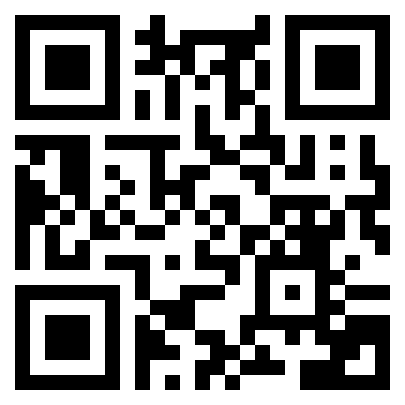- PSY4011 Developmental Psychology Assessment Brief | Arden University
- QSP7PCM Professional Cost Management Assignment 2 September 2025 | UCEM
- EGR2006M Control Systems Assignment 1 Brief | University of Lincoln
- MBA7066 Innovation and Entreprenuership Assignment Portfolio 2025 | UGM
- Contract Law Assessment 2 Problem Scenario 2025-26 | University Of Salford
- Operations & Supply Chain Management Assignment Brief : E-Commerce Supply Chain Efficiency
- Unit 1 Programming Assignment 2025-26 | ESOFT Metro Campus
- K/651/4745 Unit 1 Teaching My Subject Written Assignment | Britannia Education Group
- H/650/1099 Level 4 Academic Writing and Research Skills Assignment Brief | LSBU
- ASB-4012 Codding for Business Application Assignment – Project in R | Bangor University
- Unit: Team Management in Health and Social Care OTHM Level 5 Diploma Assignment
- BTEC Level 3 Unit 4 Programming Assignment – Concepts of Programming
- HSO4004 Principles of Care Assignment-1 and Assignment-2 Semester-1 September 2025-26
- 1031ENG-N Civil Engineering Construction Technology In-Course Assessment (ICA) Group Report | Teesside University (TU)
- MOD009382 Finance and Governance in Health and Social Care 011 Assessment Coursework Report | Anglia Ruskin University
- Geotechnical Engineering Assignment 2025/26 – University Of Surrey (UniS)
- Essentials of Adult Nursing Summative Assessment – University of Roehampton London (UoRL)
- BMP3006 Practical Digital Marketing Assessment 1 Individual Written Portfolio September 2025 – Regent College London
- CIPD_5HR03_24_01 5HR03 Reward for Performance and Contribution Level 5 Associate Diploma Learner Assessment Brief – Chartered Institute of Personnel and Development
- AF6010/LD6041 Strategic Management Accounting Assessment Brief AY2026 – Northumbria University Newcastle (NUN)
F/650/1141 Unit 4 Team Management and Recruitment Assignment: Health & Social Care Case Study for Effective Leadership and PDPA-Compliant Hiring
| University | The Open College (OC) |
| Subject | Unit 4: Team Management in Health and Social Care (F/650/1141) |
Unit Aims
This unit aims for the learner to show that they can manage and supervise a team and develop their performance in the health and social care setting. The unit also explores recruitment in health and social care settings.
Learning Outcomes, Assessment Criteria and Indicative Content
| Learning Outcome – The learner will: | Assessment Criteria – The learner can: | Indicative content |
|---|---|---|
| 1. Understand the characteristics of effective team work. | 1.1 Analyse theories of team development. 1.2 Suggest strategies to overcome common team work challenges. 1.3 Evaluate the impact of leadership styles on a team. 1.4 Assess the importance of accountability and trust in a team. 1.5 Compare and contrast methods of managing conflict within a team. | • Challenges for a team: Tuckman’s theory of group development, respect differences; role recognition, Belbin’s Team roles. • Features of a team: goals, roles, procedures, communication, relationships and leadership. • Solutions to challenges: communication, negotiation, joint working with professionals, task sharing, assertiveness, strong leadership and direction. • Theories of management styles: Trait Theory, Authoritarian/Autocratic, Democratic/Participative, Laissez-faire. • Accountability: be consistent, honest. • Conflict: disagreements, personal values and beliefs. |
| 2. Know how to support a positive culture within a team in a health and social care setting. | 2.1 Explain the components of a positive culture within a team. 2.2 Describe how systems and processes support a positive culture in a team. 2.3 Explain how to foster creative and innovative ways of working in a team. | • Shared ways of working; communication; values/beliefs; valuing contribution from others; inclusiveness and openness • Shared records; team meetings; supervisions/appraisals; induction and staff training • Creative and innovative methods of working: communication; dynamic approach; person; centred care; integrated workforce agenda; priorities; co-working; rota systems; challenging routine practices |
| 3. Understand how to agree performance objectives with the team. | 3.1 Explain the links between individual, team organisational objectives. 3.2 Explain factors which influence forward planning in a team. 3.3 Explain how to identify areas of individual and team responsibility in achieving objectives. 3.4 Explain how to identify and agree aims and objectives to promote a shared vision within own team. 3.5 Evaluate how the vision and strategic direction of a team influences team practice. | • Beliefs and values, personality, information systems, appraisal, training, creativity, transformational leadership, culture of interest, developmental opportunities. • Shared methods of working; communication; values and beliefs; working methods between team members; valuing contribution from others; inclusiveness and openness • Supervision; appraisal; sharing information; communicating; listening to others; team working to common goal/objectives • Transformational leadership; shared values; empowerment; co-production; developing other people; openness; honesty; strategic planning; ongoing monitoring and review. |
| 4. Be able to manage team performance. | 4.1 Apply techniques to monitor progress in achieving team objectives. 4.2 Demonstrate how to provide constructive feedback when underperformance is identified. 4.3 Explain how team members are managed when performance does not meet agreed requirements. | • Communicate strategy and vision, identify aims and objectives, sharing of skills, roles and responsibilities, and celebrate achievement. Progress towards objectives, quality of provision, service user feedback. • Underperformance: areas to improve on, Set clear expectations and match staff to the skills required, performance reviews, training, mentorship. Disciplinary action/ stages. |
| 5. Know about recruitment and selection processes in health and social care. | 5.1 Explain the impact of legislative and regulatory requirements on recruitment and selection processes in health and social care settings. 5.2 Analyse how serious case reviews and inquiries have contributed to the establishment of policies and procedures within recruitment which are necessary to safeguard vulnerable people. 5.3 Explain how to establish the criteria that will be used in the recruitment and selection process. 5.4 Describe how to involve others in the recruitment process. | • Equality Act 2010; General Data Protection Regulation (GDPR) 2018, Health and Safety etc Act 1974; Safeguarding Vulnerable Groups Act 2016, The National Minimum Wage Regulations 2016, Working Time Directive 1998, Working Together to Safeguard Children 2013, working hours, visas, advertising standards; qualification requirements; safeguarding-DBS; national initiatives; apprenticeships, traineeships, internships and returnships Use of social media networks; internal to the organisation; newspapers and journals; local radio; television; networks; agencies; head hunters; recommendation/referrals, recruitment fairs, people leaving the services, job centres. • Involvement through effective communication methods; person centred ways of working; identification of needs, preferences and abilities; advocacy. |
Do You Need Assignment of This Question
Assessment
To achieve a ‘pass’ for this unit, learners must provide evidence to demonstrate that they have fulfilled all the learning outcomes and meet the standards specified by all assessment criteria.
| Learning Outcomes to be met | Assessment Criteria to be covered | Assessment type | Word count (approx. length) |
|---|---|---|---|
| All 1 to 5 | All ACs under LO 1 to 5 | Coursework | 3000 words |
Indicative Reading List
Belbin, M. (1981). Management Teams: Why they succeed or fail. London: Heinemann
Tuckman, B (1965) Developmental sequence in small groups, Psychological Bulletin, SPECIFICATION Martin, V., Charlesworth, J. and Henderson, E. (2010) Managing in Health and Social Care (2nd Ed). London. Routledge
Tilmouth, T., Davies-Ward, E and Williams B. (2011) Foundation Degree in Health and Social Care. London: Hodder Education.
Gold. J., Thorpe, R. and Mumford, A. (2010) Leadership and Management Development. 5th Edition. CIPD
Marchington, M. and Wilkinson, A. (2008) People Management and Development: Human Resource Management at Work. London: CIPD
Redman, T. and Wilkinson, A. (2009) Contemporary Human Resource Management: Text and Cases. 3rd Edition. Pearson, Financial Times Press
Additional Resources
www.businessballs.com Learning and development resources
www.teambuilding.co.uk Event management
www.belbin.com Resources on team theories
www.leadershipacademy.nhs.uk NHS – Leading Teams in Health and Social Care
Buy Answer of This Assessment & Raise Your Grades
If you are short on time and looking for expert help for your Unit 4 Team Management and Recruitment Assignment? Our team of professional diploma writers provides top-quality UK Assignment Help AI-free. Just write do my assignment, and your assignment will be completed on time. We are ensuring you get the best results on our affordable platform, where we also provide free assignments examples for students to show the quality of our work. Contact us today for a plagiarism-free solution. This will help you stand out from the rest with better grades.




